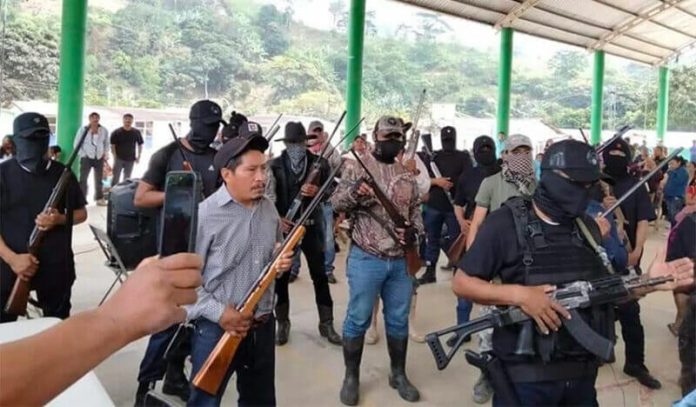Residents of a Chiapas municipality located on the border with Oaxaca have vowed to defend their right to continue living in Mexico’s southernmost state after the Supreme Court (SCJN) ruled that their communities are actually part of Oaxaca.
Communal landowners from Rafael Cal y Mayor, a community in the municipality of Cintalapa, sent photographs to the media in which they appear holding assault weapons and rifles. They indicated they are willing to fight a recent SCJN decision that transferred 160,000 hectares of land in Cintalapa to Oaxaca.
Ownership of the land has been disputed for more than 50 years, and there have been numerous armed clashes over it between chiapanecos and the neighboring oaxaqueños.
The newspaper El Universal reported that residents of other affected communities in Cintalapa announced that they would use the Indigenous and Tribal People’s Convention of the International Labour Organization to support their case to remain part of Chiapas.
Cintalapa official Mario Hernández Hernández called on the SCJN to reconsider its ruling and and base a new one on justice, respect for human rights and respect for indigenous peoples in accordance with article 2 of the constitution.
He said residents of Rafael Cal y Mayor don’t want to live in Oaxaca because in Los Chimalapas – the collective name for the Oaxaca municipalities of San Miguel Chimalapa and Santa María Chimalapa – inhabitants are subject to the traditional form of government known as usos y costumbres.
“What I’m afraid of is that from one moment to the next we’ll become part of Oaxaca and Los Chimalapas,” said Heriberto Cruz Aguilar, a farmer in Rafael Cal y Mayor. Put simply, he added, being an ejidatario, or communal landowner, in Chiapas is not the same as being a comunero, or communal landowner, in Oaxaca.
Cruz also said he feared he would be dispossessed of his land.
Territorial disputes are common in parts of Mexico, especially in the southern states with large indigenous populations such as Chiapas, Oaxaca and Guerrero.
With reports from El Universal
